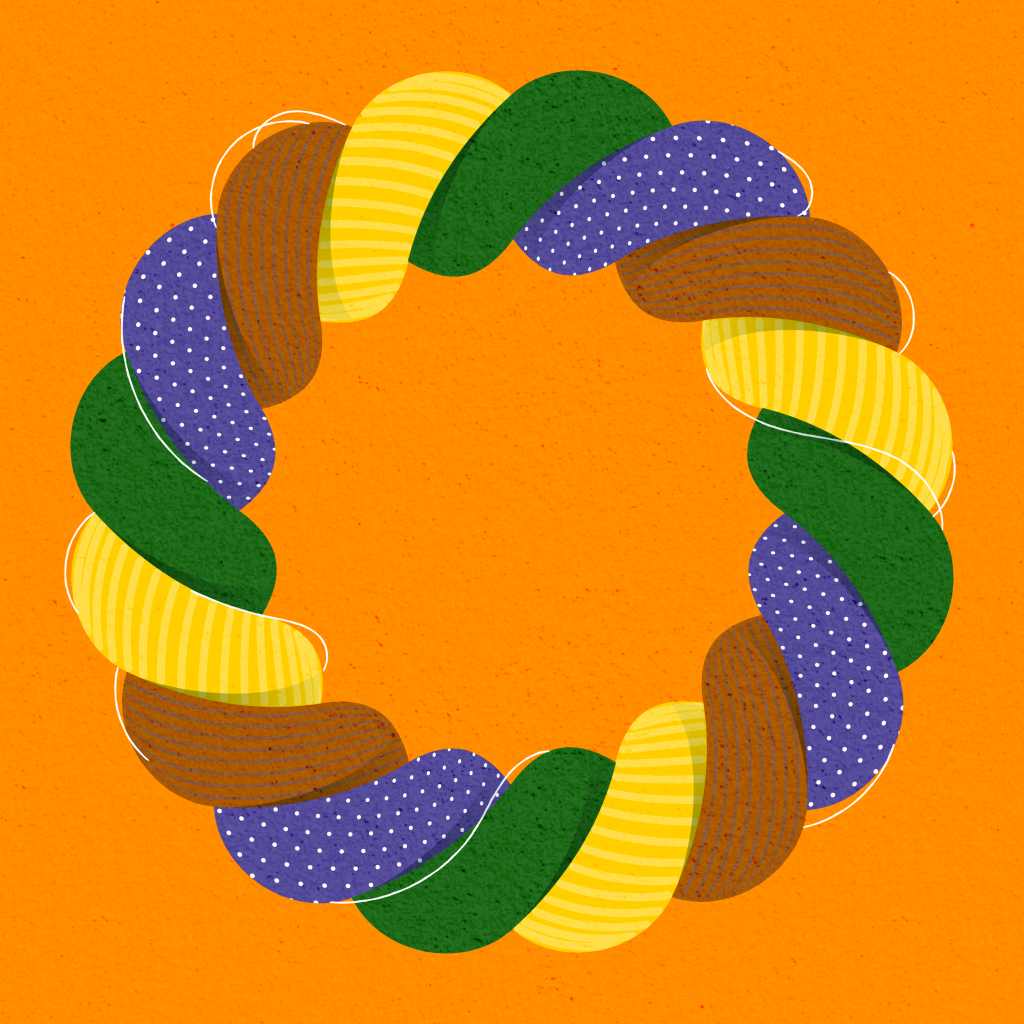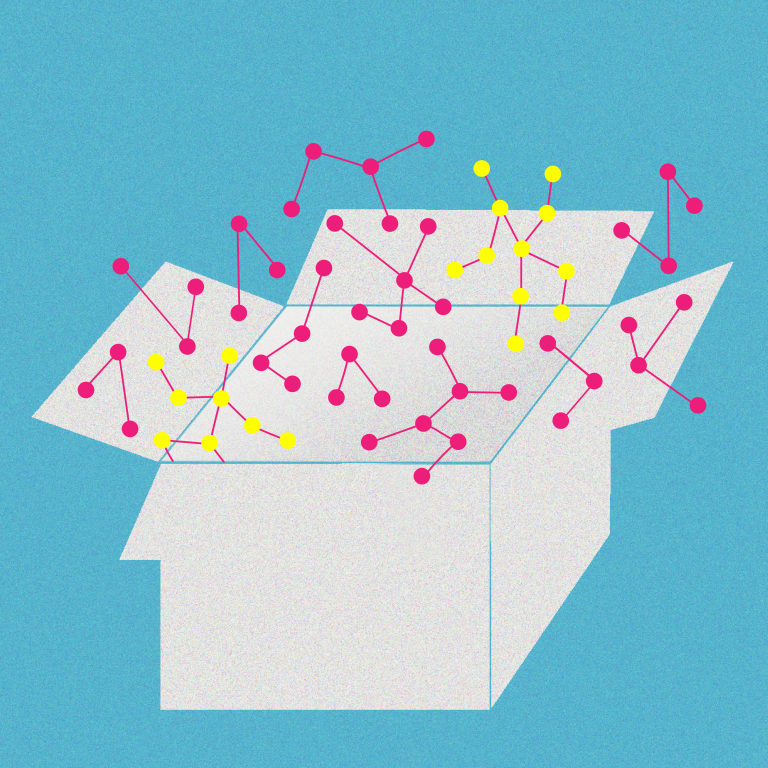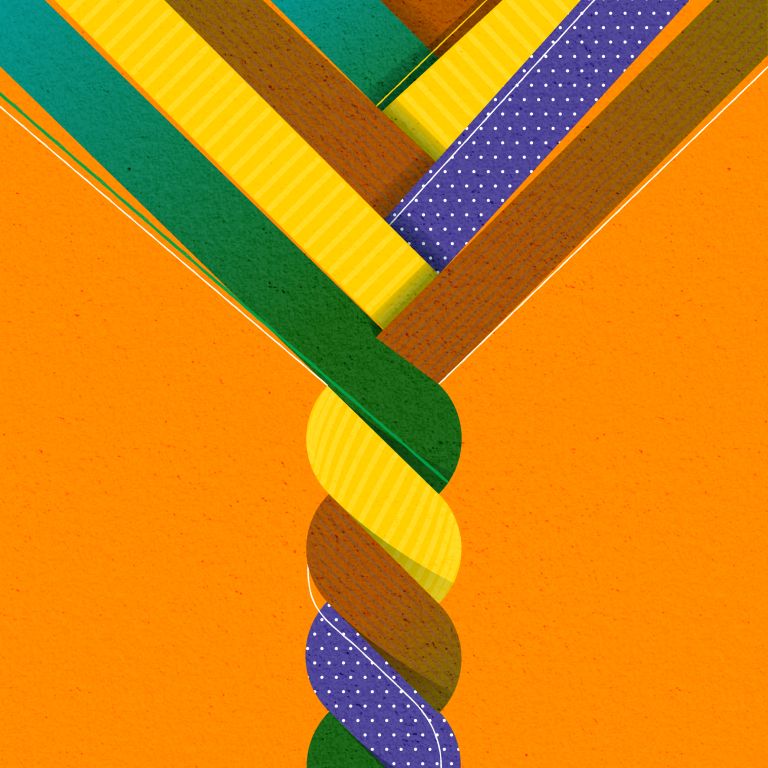The Story of Naples
In reading Japanese philosopher Fujihara Tatsushi’s <Philosophy of Decomposition (分解の哲学)>, I discovered a fascinating observation about the city of Naples in the early 20th century through Alfred Sohn-Rethel, a German philosopher/economist renowned for his work on epistemology. In his 1926 essay “The Ideal of the Broken-Down,” published in the newspaper Frankfurter Zeitung, Sohn-Rethel describes what now appears paradoxical to modern readers — the unique Neapolitan approach to technology.
“For the Neapolitan it is only when things are broken that they begin to work (…) in a display of matchless mastery, he succeeds in restarting his broken-down car by, in some impossible manner, attaching a small piece of wood which just happened to be lying in the street—only, that is, until it soon, and this much is certain, once again breaks down.”
This somewhat counterintuitive perspective extends beyond practicality. As Sohn-Rethel notes, the Neapolitan “detests the very notion of lasting repairs and would rather do without a car altogether (…) for him the essence of technology lies in making what is broken work.” More surprisingly, fully functional objects provoked suspicion: “That which is intact (…) simply works, arouses in him misgivings and doubt, because the very fact that it simply works means that one can never know how and to what end it will work.”
The philosophical core of this worldview emerges when Sohn-Rethel writes that true technical engagement “begins where man makes use of his veto against the closed and hostile automatism of machines and plunges himself into their world.” For Neapolitans, in other words, meaningful relationships with technologies could only form through broken things whose mechanisms they physically understood. New, undamaged items remained fundamentally “incomprehensible” because they existed outside of their human experience.
What makes Sohn-Rethel’s observations so compelling is certainly not their practical application to our digital age, but how they illuminate our changing relationships with technology over time.
In today’s world of AI advancements and algorithmic complexity, built on the invisible, ubiquitous internet of things, we’re so distanced from understanding the objects we interact with daily. We are used to interacting with black-box technologies as passive consumers, a stark reversal from the Neapolitan approach, where meaning emerged through hands-on engagement with technologies.
Yet, as inconceivable as it might seem today from our contemporary vantage point, the story of Naples is a timely reminder that our current technological detachment isn’t the natural culmination of progress. Viewed from a broader historical perspective, we can imagine how these relationships have been reshaped over time by cultural practices and historical circumstances.
Citizen Science as Response
The old story of Naples suggests we may well envision rich alternative possibilities in our relationship with technology. Why does this matter? Because our current one-dimensional relationship reveals a fundamental power imbalance, depriving us of opportunities to examine these connections meaningfully and, through that reflection, understand ourselves more deeply.
Being more proactive with technology doesn’t require suddenly understanding the inner workings of neural networks. Rather, it’s about cultivating a mindset, a willingness to reclaim our agency within our environments. At DAL, we’ve been advocating for this alternative relationship with technology, seeking ways to empower individuals and expand the dialogue to include those rendered invisible in the current conversations around technology.
Citizen science embodies these ideals perfectly in many ways, capturing the spirit of engagement that characterized the Neapolitan approach, though in a modern context. By connecting with technological and scientific newcomers and supporting anyone curious enough to ask questions and gain hands-on experience, citizen science initiatives encourage wider participation and motivate people to help create worlds worth living in, as Michelle Huang noted in a previous blog post.
The MESH exhibition
DAL brought these ideas to life through the MESH exhibition in March. The event showcased four projects from diverse cohorts across the US and Japan, bringing together nearly 100 participants from varied backgrounds—including CEOs and directors from Innovation Fellowship, FabCafe, Voxl, Skylab Workshop, Neko Alliance (web3), and FabLab Hamamatsu, alongside university researchers and other curious minds.
Held at Crypto Cafe & Bar in Tokyo—a venue where DAL had previously hosted an online governance experiment—this exhibition marked an initial step in translating our ideas into concrete, creative expressions. The gathering united a very interesting mix of innovative thinkers and offered an inspiring preview of future possibilities for citizen science initiatives.
For the full version of the project descriptions written by the cohorts, please visit this page. Here, we present some highlights from the exhibition.
Biotopy
The Biotopy project emerged from a desire to create more democratic and playful approaches to scientific discovery. The team of Will Freudenheim, Wendi Yan, and Darren Zhu, with R&D contributions from Jessica Shand and Omar Rizwan, sought to reconnect with the historical roots of scientific knowledge, where hands-on experimentation preceded formal understanding, like humans making bread before understanding yeast. Drawing inspiration from citizen science initiatives like FoldIt, the team envisions meaningful scientific contributions that wouldn’t require advanced degrees.
Biotopy manifests as a biotic game and interactive installation bridging bioreactors with game engines. Partly an artistic game, partly a philosophical experiment, and partly a tech demo, it speculates on a more playful mode of scientific discovery where players become citizen scientists who interact with actual microbial cultures to nurture a virtual creature on their computer. Unlike simulations, Biotopy produces a genuine biological process on-screen, functioning as a playful interface between biotic and digital worlds.
At its foundation, Biotopy champions a scientific identity centered on curiosity and care rather than rigid procedures or formal credentials. The project resonates with decentralized science communities that prioritize creativity and open participation. Through the dynamic feedback between players and living organisms, it provokes deeper questions about how biotic agents might coexist with digital universes, how collective play could facilitate scientific breakthroughs, and how we might practice a more expansive scientific self.
Digital Terrarium
In a world overflowing with data, much of it remains intangible and incomprehensible, often abstracted into ranks of numbers that feel disconnected from physical reality. Statistics about food production, fiscal circulation, or mortality rates become mere digits on a screen, their significance obscured behind raw numerics. Michelle Huang and Ira Winder’s Digital Terrarium project emerged in response to this growing need for “embodied data” that is anchored in physical space, fostering intuition and attunement with our lived environments. Drawing inspiration from David Krakauer’s notion of competitive and complementary “cognitive artifacts,” they sought to create technology that increases rather than diminishes our capacity to function as individuals in the world around us.
Digital Terrarium reorients how we engage with environmental data, allowing it to be de-abstracted into an experiential, aesthetic, and interactive medium. Michelle and Ira developed four terrarium ecosystems and programmed software for sensors that interact with temperature, pressure, humidity, lux, and noise to determine the growth of digital holographic creatures. Users can drag and drop digital creatures, such as jellyfish, from a simulated ecosystem into their terrarium to steward. Once there, the creatures react to real environmental conditions measured by local sensors, adjusting their movement patterns or shifting shapes based on environmental changes. This participatory model turns the Digital Terrarium into an interactive, networked experiment in evolution and adaptation.
A larger vision emerges when considering distributed citizen science. If users worldwide install Digital Terrariums, they collectively generate a decentralized dataset of environmental inputs that could be analyzed to understand climate trends from a bottom-up perspective. Michelle and Ira’s project opens opportunities for participatory data where individuals become active creators of new living worlds, fostering environmental awareness through tangible, interactive ecosystems.
Computing Shrine
Spencer Chang’s Computing Shrines is a creative intervention in response to the increasing loneliness epidemic in urban areas. While we are more digitally connected than ever, these connections are often plagued by misinformation and superficial relationships. Spencer draws inspiration from grassroots community initiatives like little free libraries and religious shrines that rally communities around common places, such as the Oakland Buddha statue that transformed a troubled intersection, and Ema, the Japanese practice of writing wishes on wooden plaques.
Computing Shrines consists of physical structures paired with site-specific websites, accessible through a tap interaction with visitors’ phones. Upon approaching a shrine, visitors offer their phone to initiate a digital experience. The core mechanic is an intimate exchange where visitors listen to the voice of the previous visitor before responding with their worries and dreams. When shrines in different locations are connected, live captions translate between languages. By limiting listening to the last message recorded, the shrine creates a fleeting conversation with a stranger—a meaningful moment of connection acknowledging shared humanity.
The Computing Shrines are designed to live in the world with no guarantee of longevity. Spencer expects natural wear and vandalism, and views them as opportunities to develop more resilient models of public digital infrastructure. This vulnerability places the responsibility of maintenance into the hands of the community. Instead of imposing technology from the top down, Computing Shrines empowers neighborhoods to adopt and adapt the installations to their specific needs and cultural contexts.
Distributed Organ
Drawing from the rich history of pipe organs, Laurie Griffith, a community manager at the Engineer Cafe in Fukuoka (one of his many hats), set out to build a pipe organ using standard hackerspace tools. Inspired by a street organ at London Bridge station, his project aimed to bring something new to this unique space that houses VR headsets and micro-controllers. After initial planning, Laurie collaborated with composer Jay Pallerino, deciding on a limited number of pipes and connecting the organ to an internet portal allowing people worldwide to play it.
The Connected Organ combines traditional craftsmanship with modern technology. Air begins at an industrial fan with pressure regulated by sensors, then passes into a wind chest that distributes it through servos controlled by a microcontroller. The pipes consist of 3D-printed heads and laser-cut wooden tubes, utilizing additive manufacturing techniques. A complementary website allows users to arrange musical snippets, submit compositions, and share their location, with submissions visualized on a 3D globe before being performed by the physical organ.
When demonstrating the work-in-progress, Laurie noticed people’s desire to physically interact with the instrument, expressing confusion about the disembodied interaction. This raises questions about where the intelligence creating the music resides—in the cloud, with the person selecting segments, or with the original composer? These questions mirror our broader relationship with opaque technological systems, where decisions physically removed from us are assumed to be made intelligently, yet it remains difficult to pinpoint where intelligence truly lies.
Citizen Problem-Solving
The four inaugural MESH Studio projects tackle different problems, but share a common thread of playful problem-solving and attentiveness to everyday life. We saw this firsthand when speaking with Laurie, who describes himself as a “tinkerer and maker.” Sharing his experience with the Engineer Cafe project, Laurie recounted his journey into citizen science, beginning with a practical problem from his daily routine:
“I ride a bicycle in Fukuoka, where you can ride on the street, but cars often pass very close. I wondered how close they get, so for a microcontroller hackathon, I created a sensor for my bike handlebars that measures the distance of passing cars (…) The final data wasn’t rigorously scientific, but I made a video of my cycling with the car distances overlaid. When you saw cars zoom past, you could sense how close they came—and some were dangerously close. This was a problem that affected me directly, involved data, and wasn’t actually complicated. By combining a few building blocks, I created something practical that advanced our knowledge about real-world conditions.”
The same can be said of the Computing Shrine project, which began when Spencer noticed an everyday challenge in his life. What they highlight is the transformative potential of citizen science communities: people identifying problems they experience, applying accessible technology in creative ways, and fostering a collaborative environment where everyone can contribute to scientific and technological innovation.
MESH Studio has been an opportunity for DAL to witness firsthand the possibilities and significance of citizen science initiatives, valuable both as a guiding metaphor for technological engagement and in the practical sense of creating tangible solutions to real community challenges. This experience has strengthened our commitment to exploring this domain further and developing projects that bring meaningful value to communities.
We’re entering an era where increasingly sophisticated technological capabilities are becoming accessible to everyone, potentially lowering barriers to scientific discovery and blurring traditional boundaries between professional scientists and enthusiastic amateurs to an extent. This democratization presents both opportunities and challenges: How can we mobilize these expanding capabilities in beneficial directions? Can we harness this energy to create systems where broader participation strengthens communities and generates positive feedback loops? Or will most people remain content with the hallucination of god-like powers, using that potential for nothing of lasting significance? These questions lie at the heart of our ongoing work and exploration at DAL.
Researchers Supported
Ira Winder is a researcher specializing in interactive simulations for complex problem-solving. With degrees in City Planning and Art and Design from MIT, he is a researcher at MIT Engineering Systems Laboratory and the University of Tokyo. He developed the Tangible Interactive Matrix (TIM), used in the MIT Media Lab’s CityScope Project, and has presented at TEDx Boston and the G7 ICT Conference. His work has been featured in The Atlantic, Financial Times Magazine, and a White House report on future cities.
Darren Zhu is a synthetic biologist building a new consumer therapeutics startup. A graduate of Yale and a former Thiel Fellow, Darren has worked with a range of biotech startups (Hexagon Bio, Enevolv, and Synbiosys) and research organizations (Berggruen Institute, Ethereum Foundation, and Gates Foundation). He is also developing new media and philosophy projects that explore the aesthetic and epistemic implications of generative models, particularly as they pertain to creativity and scientific discovery.
Wendi Yan is an artist and researcher combining folktales with speculative philosophy in simulations, film, and sculpture. A History of Science graduate from Princeton University and recipient of the Horace H. Wilson Thesis Prize, her work has been supported by the Arctic Circle Residency, Berggruen Institute, and Ethereum Foundation. Based in Los Angeles, Wendi is a Steve Jobs Archive Fellow and VH Award finalist, with features in WeTransfer and Wallpaper.
Will Freudenheim is a New York-based game designer creating experimental games and virtual worlds. He co-founded Laser Days, where he directs films, live performances, and installations that have premiered globally. His work explores collaboration among human, artificial, and biological participants in shared digital spaces.
Spencer Chang is an internet artist and engineer focused on speculative communal infrastructure through participatory installations and creative technologies. Their work has been featured at the de Young Museum, Gray Area, and CultureHub, with exhibitions in San Francisco, New York, and Berlin. A NEW INC Art & Code member, they emphasize collective play and dismantling oppressive systems.
Laurie Griffiths is a software engineer and consultant based in Fukuoka, Japan, with a Computer Science degree from Cambridge. A former early hire at startups, he now helps software teams simplify development and reduce costs. Outside of work, Laurie mentors engineers at Fukuoka’s Engineer Cafe and builds creative projects in his workshop
Michelle Huang is a mixed-media artist and technologist exploring human flourishing through immersive experiences. She is the founder of Akiya Collective, a non-profit renovating abandoned homes in Japan, and co-director of MESH Studio, a media lab for emerging technologies. A graduate of NYU, she previously worked at Goldman Sachs and received an Emergent Ventures grant. Her work has been featured on Business Insider, NPR, Vox Media (Now This), ABC, CNET, The Independent, BBC, and more
Keiko Ono is a strategist and ecosystem builder with +10years experience in social impact and technology across the public and private sectors (Google, British Embassy). A graduate of SOAS, she consults for Series A–C startups in Japan and is Co-Director of MESH Studio, a media lab for emerging technologies. Her previous work as Co-founder of Social Innovation Japan has been recognized by Nikkei’s ‘100 Businesses Creating the Future of Japan’ and the Minister of Environment Prize.
Joseph Park is a researcher at DAL (joseph@dalab.xyz)
Illustration: Soryung Seo
Edits: Janine Liberty





